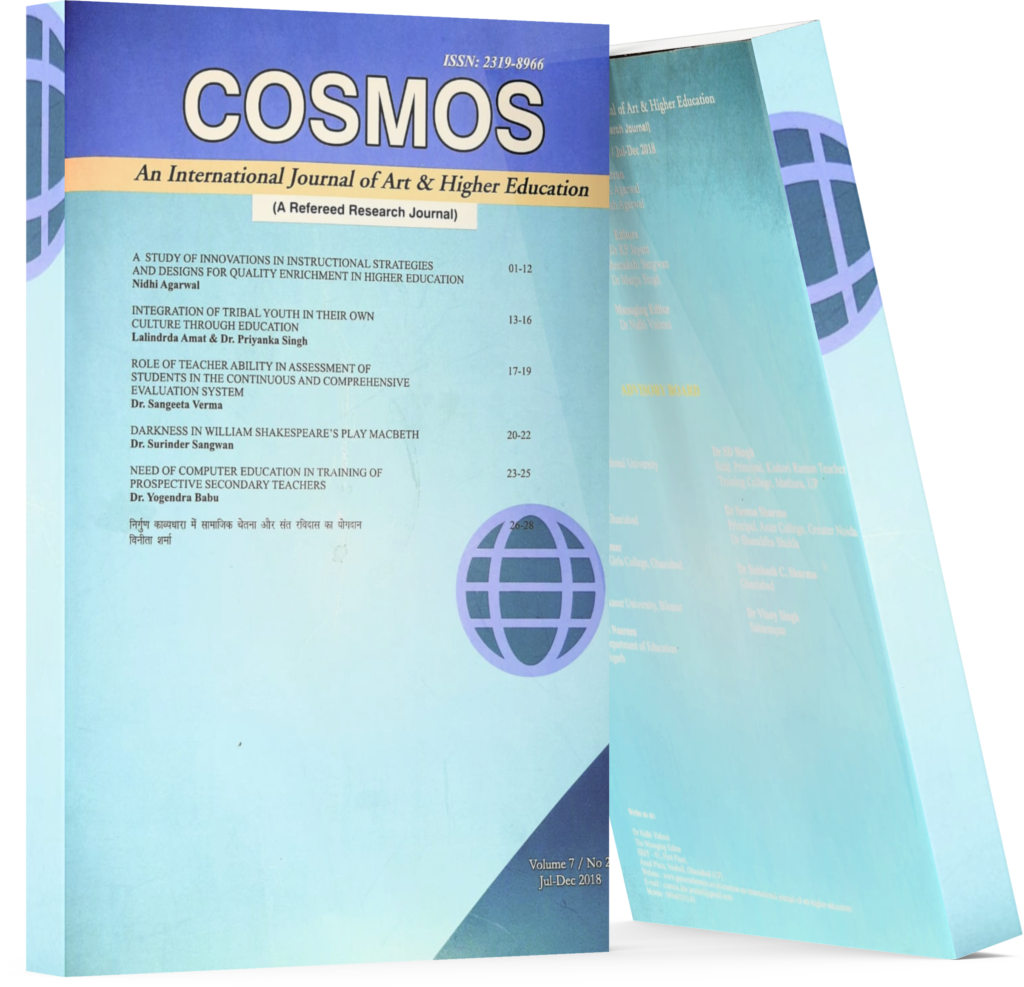Student-Centered Learning In General Educationinaprivate University In Manila: An Analysis
Keywords:
Student-centered Learning, General Education, Private University, Manila, Behavioral,, Intellectual, EnvironmentalAbstract
Transitioning from the traditional pedagogical norm to student-centered learning (SCL) is crucial to achievethe desired outcome. This is to produce graduates equipped with soft skills ready to face the life and global challenges of the 21
st century. This study provided the first tranche of evidence how the desired outcomeshave been realized by the general education students through SCL. Opportunely, SCL was deemed tobeharbinger of fundamental skills like collaboration, critical thinking, creativity, cognitive and self-directedlearning, communication and digital literacy. In the light of positive results, SCL implementation has not reached its fullest efficiency more particularly in the environmental component to reap the best outcomes. Positive relationship findings between environmental, cognitive and behavioral component will provideavenue to hoist standard of SCL implementation. Hence, continuous exploration of other partakers, monitoring and quality improvement is recommended.
Downloads
References
Bada, S., (2015). Constructivism Learning
Theory: A Paradigm for Teaching and
Learning. IOSR Journal of Research & Method
in Education, 5(6), 66-70.
FEU, (2017). Annual Report 2017-FEU
Investor Relations. Retrieved from
https://investors.feu.edu.ph/.../2017/102517/20
%20Annual%20Report_finale.pdf
Biggs, J., (1999). What the student does:
Teaching for quality learning at university. Buckingham: Open University Press.
Cannon, R. and Newble, D., (2000). A
handbook for teachers in universities and
colleges: a guide to improving teaching
methods. (4th ed.). London: Kogan Page.
Prosser, K. and Trigwell, M., (2002). Experiences of teaching in Higher Education. In Understanding Learning and Teaching: The
Experience of Higher Education. Buckingham:
SRHE and Open University Press.
Stevenson, K. and Sander, P., (2002). Medical
students are from Mars-business and
psychology students are from Venus-University teachers are from Pluto? Medical
Teacher, 24(1), 27. 7. Kajander A, Z. C. (2008). Teaching unheard
voices: Students at-risk in. Canadian Journal of
Education, 31(4), 1039-64. 8. Uhl, C., (2010). Steering into the curve:
Getting real in the classroom. College
Teaching, 58(3), 105-08. doi:10.1080
Powell, M., (2013). 5 Ways to Make your
Classroom Student-Centered. Retrieved
January 27, 2018, from Education Week
Teacher:
https://www.edweek.org/tm/articles/2013/12/2
/ctq_powell_strengths.html
Rani, P., (2018). Inclusive education and its
application. Globus Journal of Progressive
Education,
(1). 11. Lom, B., (2012). Classroom activities: simple
strategies to incorporate studentcentered
activities within undergraduate science
lecturers. The Journal of Undergraduate
Neuroscience Education, 11(1), A64-A71. 12. Garcia, R., (2020). Milieu, attitude and
cognitive aspects of student-centered learning
in nursing education: a correlational study. Globus Journal of Progressive Education,
(2), 7-13. 13. Lakshmi, N., (2014). Creative thinking and
Student-centered learning in UG classroom: A
small survey. International Journal on Studies
on English Language and Literature, 2(3), 18- 23. Retrieved from
https://www.arcjournals.org/pdfs/ijsell/v2-
i3/4.pdf
The Manila Times, (2020, October 1). FEU
only PH institution in innovative universities
list. The Manila Times. Manila.
Iiyoshi, T., Hannafin, M., & Wang, F., (2016). Cognitive tools and student-centered learning:
rethinking tools, functions, and applications. Educational Media International, 42(4), 281- 296. 16. Agarwal, N., Sharma, A., & Tyagi, I., (2017). Role of education in meeting challenges of
globalization. Globus An International Journal
of Management & IT, 9(1), 1. 17. Kindy, S., Kindy, F., & Kindy, A., (2018). The
advantages and disadvantages of self-directed
learning: a survey study of Saudi medical
students. MedEdPublish. doi:10.15694/
mep.2018.0000058.1. 18. European Students’ Union, (2015). Overview
in Student - Centered Learning in Higher:
Research Study. Retrieved from
https://www.esu-online.org/wp- content/uploads/2016/07/Overview-on- Student-Centred-Learning
Leonard, B., (2018). Student-centered
collaborative classrooms and critical thinking
skills. NW Commons.
Mishra, P. and Sharma, P., (2018). Digital
literacy competencies in the 21st century. Globus Journal of Progressive Education, 8(2).
Kollmer, M. J. (2013). The relationship
between selected educational technologies and
student-centered versus teacher-centered
instruction. Retrieved October 25, 2018, from
https://search.proquest.com/central/docview/14
/9846CCCB076E4AC4PQ/6?accoun
tid
Bandura, A., (1986). Social foundations of
thought and action: A social cognitive theory.

